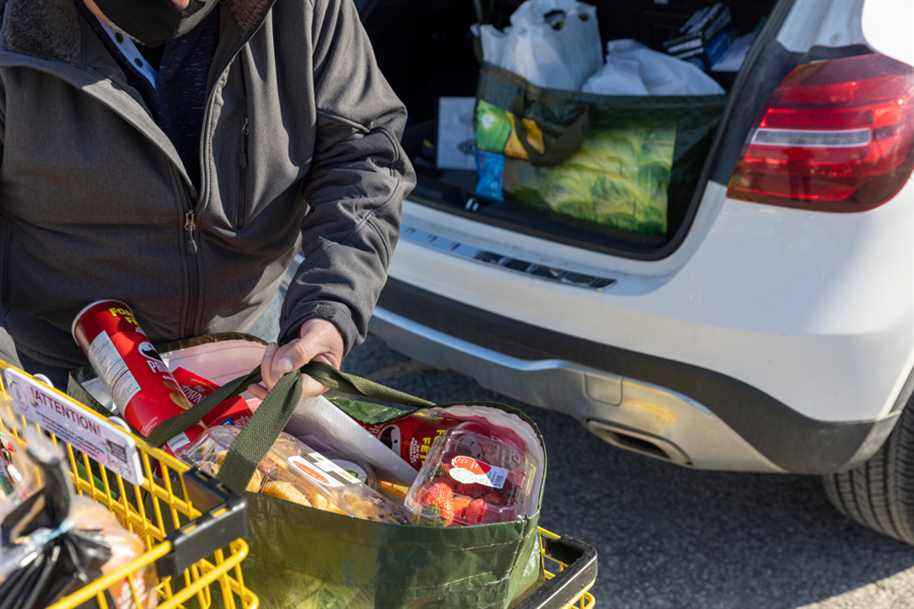Posted at 6:00 a.m.
Gas produced, gas consumed
Data to measure a country’s carbon footprint is often based on the amount of greenhouse gases (GHGs) emitted on its territory and the number of people who live there. The new annual indicator developed by the Institut de la statistique du Québec (ISQ) approaches the issue differently: it measures the quantity of GHGs emitted, here and elsewhere, by each Québec household to support its annual consumption of goods and services. Thus, the quantity of GHG emitted to produce the tons of bananas consumed by Quebecers is taken into account. However, the GHGs emitted by Gaspé crab fishermen whose harvest is sent abroad are excluded. “This is the first time that we have used sources of macroeconomic data from Statistics Canada and the OECD to establish the carbon footprint,” explains Sophie Brehain, project manager at the ISQ. Annie Levasseur, professor at the École de technologie supérieure and holder of the Canada Research Chair in measuring the impact of human activities on climate change, is delighted with the creation of this index. “When we only look at territorial inventories, it completely obscures all the emissions associated with imports. As citizens, we have a lot of power over this element because we can make consumer choices. »
8.7 tonnes of CO equivalent2 per inhabitant
Average quantity of GHG emissions generated to support the consumption of a Quebec household in 2017
Source: Statistical Institute of Quebec
Consider everything
The household carbon footprint is made up of two types of GHG emissions: direct and indirect. Direct emissions are those produced by the consumption of fossil energy by households themselves, such as fuel in the car, oil for heating, gas for the stove. Indirect emissions are those resulting from the manufacture of goods and the production of services that are consumed by households – for example, the agricultural machinery needed to grow wheat, the transport of cereals and other ingredients to the bakery and the bread delivery to the grocery store. Three gases have been studied to measure GHGs: carbon dioxide (CO2), methane (CH4) and nitrous oxide (N2O). However, data on methane and nitrous oxide emissions generated outside of Canada are not available. The total carbon footprint is therefore underestimated, warn the authors of the study.
Energy in mind

ILLUSTRATION FROM ISQ
“The objective with this kind of compilation is to determine the potential levers where it is possible to act,” recalls Annie Levasseur. Unsurprisingly, nearly half of the GHG generated by the consumption of Quebec households is linked to the direct consumption of fossil fuels by their own vehicles. Half of the emissions in the “Transport” category, for their part, are generated by air transport. To reduce the quantity of GHGs emitted in this category, there are no 36 solutions: we must consume less gasoline. “We must try to reduce solo driving, whether by taking public transport, adopting active transport, carpooling, reducing distances…”, lists Annie Levasseur.
food
The other major source of GHGs in Quebec consumption is food. In 2017, spending on food and beverages (which includes restaurants) accounted for the largest share of household spending (21%). And, unlike the energy sector, two-thirds of the GHGs emitted for the consumption of food in Quebec were emitted elsewhere in Canada or in other countries. Buying local food can obviously help reduce the share of GHGs for this sector. But, reminds M.me Levasseur, the reduction in the consumption of meat, whose carbon footprint is higher than that of plants, also has a significant effect. “It’s the easiest measure, but not necessarily the most appreciated,” she admits. The ISQ specifies that the emissions produced by the raising of slaughter animals abroad are underestimated. “Taking into account the methane often released by the enteric fermentation of certain animals would probably have inflated emissions from the agricultural primary sector. »
Where Quebecers have polluted
Most of the time, Quebecers have polluted their homes to satisfy their consumption. When they polluted abroad, the United States (26%) and China (24%) absorbed the GHG emissions for themselves. For the “Food and Beverage” category, most CO emissions2 have been made in countries other than these two giants, notably in Mexico.
GHG emissions, by location
GHG emitted in Quebec: 62%
GHG emitted elsewhere in Canada: 14%
CO2 issued outside of Canada: 24%
Difficult comparisons
So, 8.7 tonnes per Quebec household, is that a lot? The game of comparisons is difficult, since the methodologies differ between the indices that measure the carbon footprint and household consumption. “But we know that in Quebec, direct emissions are lower because of hydroelectricity,” recalls Ms.me Lifter. “On the other hand, we know that when it comes to consumption, we’re not necessarily champions… And that’s the case everywhere in North America, where we consume a lot more resources than in other countries. Sophie Brehain, for her part, is preparing the update of the indicator with 2018 data. “As this will be an annual indicator, I believe it will be better to compare it with itself, over several years. »
CO equivalent2
In the study, the carbon footprint is expressed in “equivalent” carbon dioxide (eq. CO2) to take into account the global warming potential of the various GHGs. For example, methane is 25 CO equivalents2 and nitrous oxide is 298.
Source: Statistical Institute of Quebec

